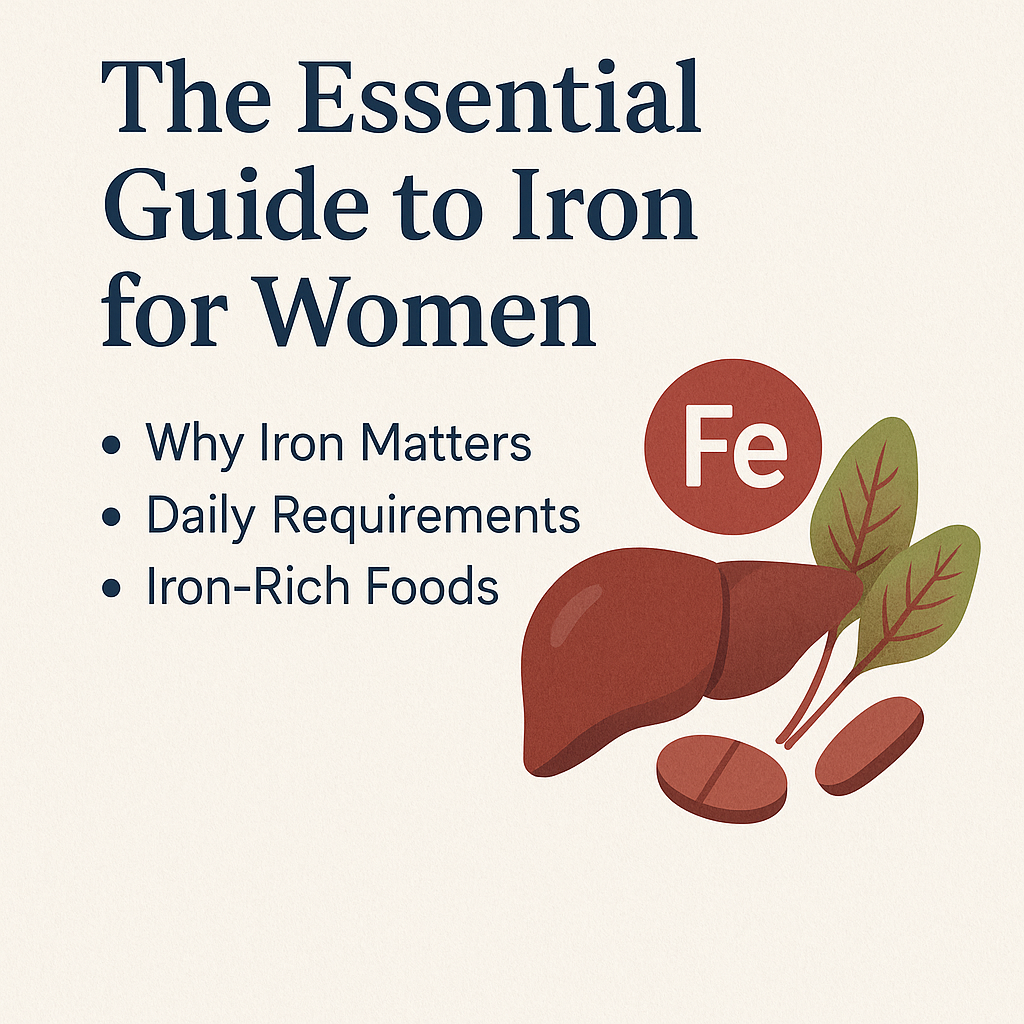
The Essential Guide to Iron for Women
Iron is one of the most important nutrients for women’s health, yet iron deficiency is one of the most common nutritional deficiencies worldwide—especially among women of childbearing age. This guide explores why iron is essential, how much you need, and how to maintain healthy levels through diet and supplements.
Why Iron Matters
Iron plays a vital role in the body by helping to make hemoglobin, the protein in red blood cells responsible for transporting oxygen from your lungs to the rest of your body. Without enough iron, your body can’t produce sufficient healthy red blood cells, leading to symptoms such as fatigue, weakness, pale skin, and shortness of breath. Over time, iron deficiency can progress to anemia, a condition that may affect your heart health and overall energy levels.
For women, iron is particularly crucial. Menstruation results in regular blood loss, and with it, iron loss. Pregnancy further increases iron requirements as the body supports both maternal and fetal health. Without adequate iron, women may struggle with concentration, mood swings, weakened immunity, and difficulty staying active.
Daily Iron Requirements for Women
Iron needs vary depending on age, activity level, and life stage:
-
Adolescent girls (14–18 years): 15 mg/day
-
Women (19–50 years): 18 mg/day
-
Pregnant women: 27 mg/day
-
Postmenopausal women (51+): 8 mg/day
Vegetarians and vegans may need nearly twice as much because the type of iron found in plant-based foods (non-heme iron) is not absorbed as efficiently as the heme iron found in animal products.
Signs You Might Be Low on Iron
If you're experiencing any of the following, low iron could be a factor:
-
Constant fatigue or weakness
-
Difficulty focusing or memory issues
-
Cold hands and feet
-
Frequent headaches
-
Pale skin or brittle nails
-
Rapid or irregular heartbeat
A blood test is the best way to know your iron status. Always consult a healthcare provider before starting supplements.
Top Iron-Rich Foods to Add to Your Diet
There are two types of dietary iron:
-
Heme iron – Found in animal products, it is the most easily absorbed form. Good sources include red meat, liver, poultry, and seafood.
-
Non-heme iron – Found in plant-based foods like lentils, beans, tofu, spinach, quinoa, and fortified cereals.
Tips to boost absorption:
-
Eat vitamin C-rich foods (like oranges, strawberries, or bell peppers) alongside iron-rich meals.
-
Avoid drinking tea or coffee with meals as they can inhibit iron absorption.
-
Use a cast iron skillet for cooking—it can add trace amounts of iron to your food.
Should You Take a Supplement?
Iron supplements can help correct deficiencies, but they’re not for everyone. Too much iron can cause nausea, constipation, or even damage organs. Supplements should only be taken under medical supervision, especially since some conditions, like hemochromatosis, cause iron overload.
